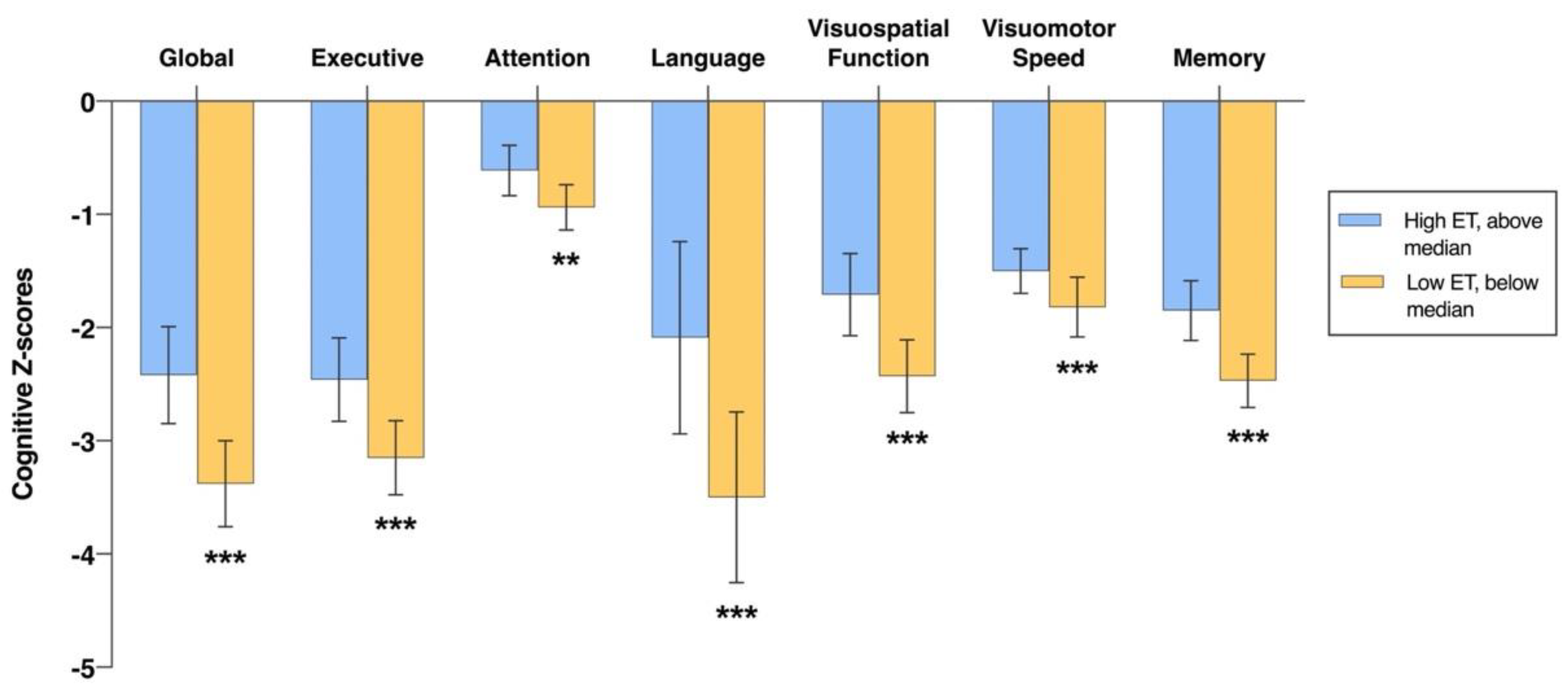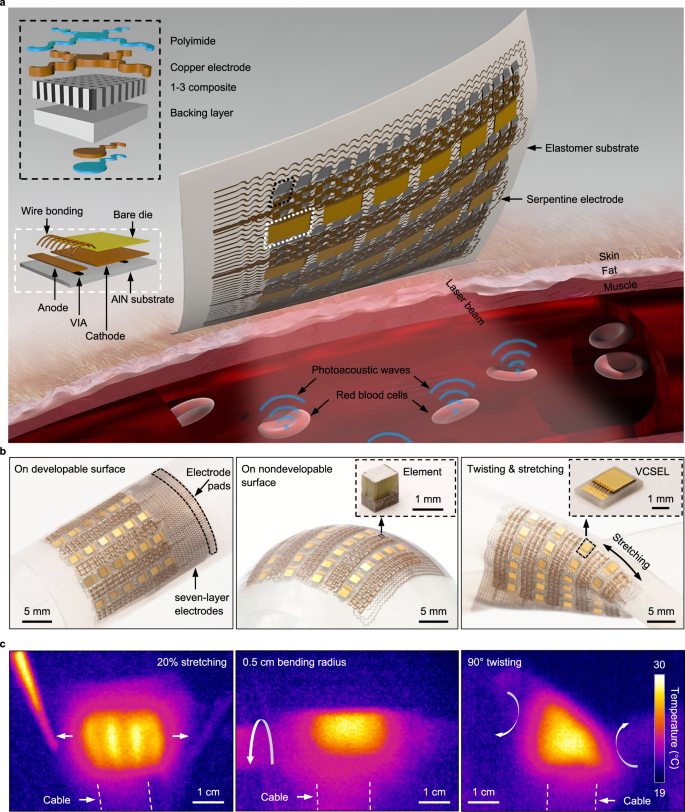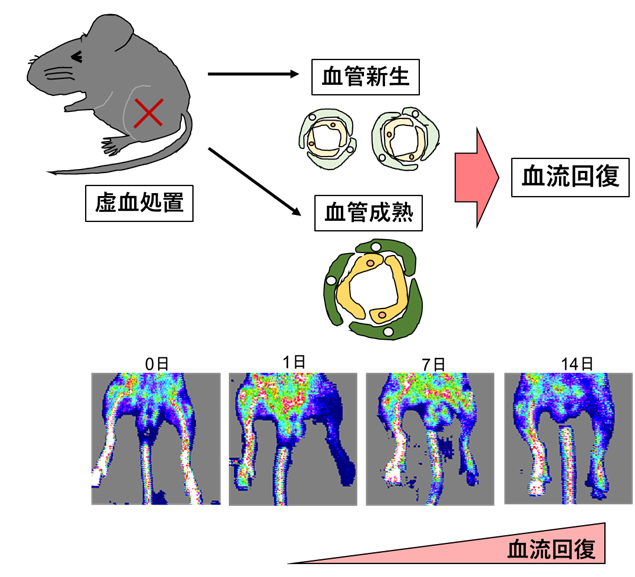2022-12-19 シンガポール国立大学(NUS)
NUS Yong Loo Lin 医学部生化学教室のBarry Halliwell教授とNUHS Memory, Ageing and Cognition CentreのChristopher Chen准教授とMitchell Lai博士が中心となって進められました。彼らの最新の研究結果は、2022年8月30日に科学雑誌「Antioxidants」に掲載されました。
ETは、100年以上前にCharles Tanretによって発見されたユニークな食事由来の化合物です。ETはほぼすべての臓器に輸送されますが、血球、目、肝臓、肺、さらには脳といった特定の細胞や組織でより高いレベルが確認されます。
ハリウェル教授による以前の研究では、ETの強力な抗酸化作用と、さまざまなストレスや毒素から細胞を保護する能力が実証されました。ETの主な食物源はキノコ類であり、ゴールデン、オイスター、シイタケ、ホワイトボタンマッシュルームなどのキノコ類の摂取量が増えると、シンガポールの高齢者において軽度認知障害のリスクが減少することが明らかにされました。
2016年に行われた研究では、軽度認知障害のある参加者の血漿中のET濃度が低いことが示されました。このことは、認知症の有無にかかわらず、より大規模な認知障害のある参加者グループで検証されました。しかし、血漿中のETの低レベルが認知障害や認知症の進行を予測できるかどうかの根拠は不明でした。
NUS-NUHSの研究チームによる最新の研究は、高齢者患者470名を募集し、記憶・加齢・認知センターで最長5年間追跡調査を行いました。参加者の血漿中のET濃度を測定し、異なる時点における認知・機能的能力を追跡調査した。そして、ETレベルの低さと、時間の経過に伴う認知・機能低下のリスクとの関連性を検討した。
研究者らは、ETレベルが低い参加者は、研究開始時に認知能力が低く、追跡期間中に認知能力と機能的能力の低下速度が加速されることを明らかにした。
また、研究チームは、被験者のMRI(磁気共鳴画像)スキャンから見られる脳の構造変化も観察し、血中ET濃度の低さと認知機能の低下との関連は、基礎疾患病態に起因することを示唆した。皮質の厚さの減少、海馬の体積の減少、白質の高濃度化など、これらの構造変化は神経変性疾患に特徴的なものである。
ハリウェル教授は、「このことは、高齢者の早期スクリーニングとして、簡単な血液検査でETレベルを検出し、認知機能低下のリスクが高い人を特定できる可能性を示しています」と述べました。また、ETの低値は、虚弱、心血管疾患、黄斑変性症など、他の多くの加齢関連疾患とも関連しており、ETは健康維持においてより一般的な役割を担っている可能性があります」とも述べています。
<関連情報>
- https://news.nus.edu.sg/biomarker-for-cognitive-impairment-and-dementia/
- https://www.mdpi.com/2076-3921/11/9/1717
- https://www.sciencedirect.com/science/article/pii/S089158492100770X
血漿エルゴチオネイン低値は、メモリークリニックに通院する高齢者コホートにおける認知機能および機能低下を予測する Low Plasma Ergothioneine Predicts Cognitive and Functional Decline in an Elderly Cohort Attending Memory Clinics
Liu-Yun Wu,Cheuk Ni Kan,Irwin K. Cheah,Joyce Ruifen Chong,Xin Xu,Henri Vrooman,Saima Hilal,Narayanaswamy Venketasubramanian,Christopher P. Chen,Barry Halliwell andMitchell K.P. Lai
Antioxidants Published: 30 August 2022
DOI:https://doi.org/10.3390/antiox11091717

Abstract
Low blood concentrations of the diet-derived compound ergothioneine (ET) have been associated with cognitive impairment and cerebrovascular disease (CeVD) in cross-sectional studies, but it is unclear whether ET levels can predict subsequent cognitive and functional decline. Here, we examined the temporal relationships between plasma ET status and cognition in a cohort of 470 elderly subjects attending memory clinics in Singapore. All participants underwent baseline plasma ET measurements as well as neuroimaging for CeVD and brain atrophy. Neuropsychological tests of cognition and function were assessed at baseline and follow-up visits for up to five years. Lower plasma ET levels were associated with poorer baseline cognitive performance and faster rates of decline in function as well as in multiple cognitive domains including memory, executive function, attention, visuomotor speed, and language. In subgroup analyses, the longitudinal associations were found only in non-demented individuals. Mediation analyses showed that the effects of ET on cognition seemed to be largely explainable by severity of concomitant CeVD, specifically white matter hyperintensities, and brain atrophy. Our findings support further assessment of plasma ET as a prognostic biomarker for accelerated cognitive and functional decline in pre-dementia and suggest possible therapeutic and preventative measures.
血漿エルゴチオネイン低値は、認知症の神経変性および脳血管障害と関連する Low plasma ergothioneine levels are associated with neurodegeneration and cerebrovascular disease in dementia
Liu-Yun Wu,Irwin K.Cheah,Joyce Ruifen Chong,Yuek Ling Chai,Jia Yun Tan,Saima Hilal,Henri Vrooman,Christopher P.Chen,Barry Halliwell,Mitchell K.P.Lai
Free Radical Biology and Medicine Available online: 19 October 2021
DOI:https://doi.org/10.1016/j.freeradbiomed.2021.10.019

Highlights
- •Antioxidant ergothioneine and l-hercynine were assessed in plasma of Alzheimer’s disease and vascular dementia patients.
- •Lower plasma ergothioneine levels were associated with cerebrovascular disease and neurodegeneration.
- •Increased l-hercynine/ergothioneine ratio in plasma suggested a higher rate of ET oxidation in dementia patients.
- •Ergothioneine could be a potential biomarker and therapeutic agent for Alzheimer’s disease and vascular cognitive impairment.
Abstract
Ergothioneine (ET) is a dietary amino-thione with strong antioxidant and cytoprotective properties and has possible therapeutic potential for neurodegenerative and vascular diseases. Decreased blood concentrations of ET have been found in patients with mild cognitive impairment, but its status in neurodegenerative and vascular dementias is currently unclear. To address this, a cross-sectional study was conducted on 496 participants, consisting of 88 with no cognitive impairment (NCI), 201 with cognitive impairment, no dementia (CIND) as well as 207 with dementia, of whom 160 have Alzheimer’s Disease (AD) and 47 have vascular dementia. All subjects underwent blood-draw, neuropsychological assessments, as well as neuroimaging assessments of cerebrovascular diseases (CeVD) and brain atrophy. Plasma ET as well as its metabolite l-hercynine were measured using high sensitivity liquid chromatography tandem-mass spectrometry (LC-MS/MS). Plasma ET concentrations were lowest in dementia (p < 0.001 vs. NCI and CIND), with intermediate levels in CIND (p < 0.001 vs. NCI). A significant increase in l-hercynine to ET ratio was also observed in dementia (p < 0.01 vs. NCI). In multivariate models adjusted for demographic and vascular risk factors, lower levels of ET were significantly associated with dementia both with or without CeVD, while ET associations with CIND were significant only in the presence of CeVD. Furthermore, lower ET levels were also associated with white matter hyperintensities and brain atrophy markers (reduced global cortical thickness and hippocampal volumes). The incremental decreases in ET levels along the CIND-dementia clinical continuum suggest that low levels of ET are associated with disease severity and could be a potential biomarker for cognitive impairment. Deficiency of ET may contribute towards neurodegeneration- and CeVD-associated cognitive impairments, possibly via the exacerbation of oxidative stress in these conditions.


